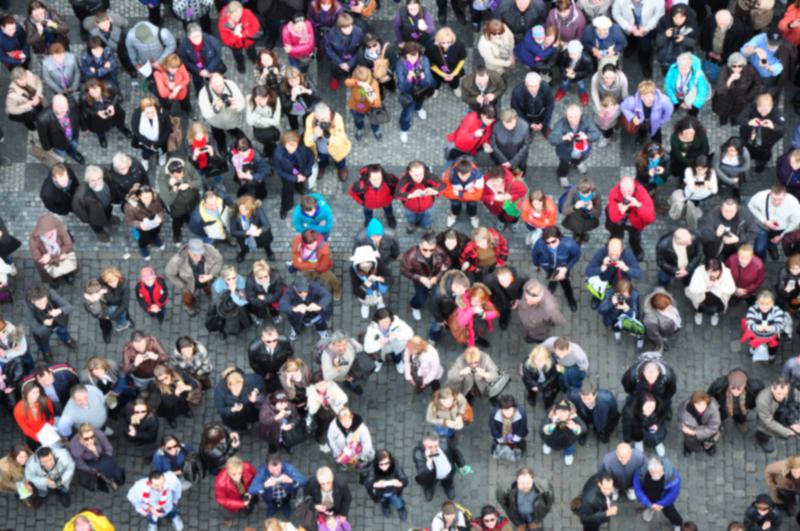
It is European Public Health Week and today’s focus is on equal health for all. Aideen Sheehan from the Institute of Public Health offers some insights on ageing, equity and health in Ireland and Northern Ireland.
We all want to live the longest, healthiest life that we can – to enjoy our independence as long as possible and to keep contributing to our families, our communities and our world.
But unfortunately the evidence is overwhelming that the length of time we get to spend in good health, as well as our ultimate lifespan, is very heavily shaped by our wealth.
None of us gets to choose what side of the economic divide we will be born into – yet to a very large extent our birth and social circumstances still dictate our ultimate end.
The gap between the haves and the have-nots is nowhere better illustrated than the fact that on the island of Ireland people from the poorest communities have a life expectancy that’s up to seven years shorter than those from the wealthiest areas.
Not only will they die earlier, but those from the most disadvantaged areas will on average spend 14 years more coping with disabilities that affect their ability to take part in the routine daily activities we all take for granted.
To look at those figures in a bit more detail:
- In ROI, average life expectancy for men in the most deprived areas is 5 years less than for men in the most affluent areas, while for women the gap is 4.5 years.
- In NI average life expectancy for men in deprived areas is 7.1 years less than for men in the most affluent areas, while for women the gap is 4.4 years.
- The gap in the number of years people can expect to live free of a disability between NI’s least and most deprived areas is 14.5 years for men and 13.9 years for women, and the gap has widened in recent years.
In ROI, 43% of people aged 65+ in the lowest income group have a long-term health related limitation on activity, compared with 16% of those in the most affluent group.

When all the numbers are finally crunched on the Covid-19 pandemic it’s also likely to show that disadvantage affects people’s chances of getting severely ill or dying from the virus. That’s partly because these outcomes are closely associated with pre-existing conditions such as lung disease, cardiac illness and obesity that disproportionately affect those in poorer communities, and partly because many low-paid workers who can’t work from home are on the frontline of risk.
While the longevity dividend of the last century has added decades onto people’s lives through improved public health – better water, air, healthcare, vaccinations and working conditions – the fact that such striking inequalities in life expectancy and disability remain, show just how much still needs to be done to extend the full benefits of a longer, healthier old-age to everyone.
Doing so will be of benefit to a vast number of people– by 2019 there were already a million people aged 65 or over on the island of Ireland (ROI – 696,000; NI- 315,000) and within the next 30 years that is projected to double to over 2 million.
Ensuring as many of them as possible can enjoy good health later in life will be of benefit not just to individuals but to society and the economy – research has shown that the older populations of Ireland and Northern Ireland play a critical role in their communities by volunteering, helping their families and increasingly in the paid labour force.
Improving health equity to reduce inequalities is not just a moral imperative, it’s a social and economic one as well.
Further information in our report Ageing and Public Health – an overview of key statistics in Ireland and Northern Ireland. Click here.
References
Life expectancy and disability differentials
Central Statistics Office (2019). Mortality Differentials in Ireland 2016-2017. Cork: CSO.
Eurostat: EU SILC data for ROI (2017b). EU SILC data. Self-perceived long-standing limitations in usual activities due to health problem by sex, age and income quintile. https://ec.europa.eu/eurostat/web/ health/data/database.
Department of Health Northern Ireland (2019). Life Expectancy in Northern Ireland 2016-18. Belfast DOHNI. 2019 Belfast.
Department of Health Northern Ireland (2020). Health Inequalities. Annual Report 2020. Belfast: Information Analysis Directorate.
Population
Central Statistics Office (2019). Population and Migration Estimates April 2019. Cork: CSO.
Central Statistics Office. (2018). Population and Labour Force Projections 2017-2051. Cork: Central Statistics Office.
Northern Ireland Statistics and Research Agency. (2019) 2018-based Population Projections for Northern Ireland (2019): NISRA.


